Bill Gates’ statement from 1996, “content is king”, is still a universal truth in 2022.
However, in the ever-changing digital world, where approximately 2.5 quintillion bytes of data are created every day, the power of content also depends on where our consumers find themselves in the buyer’s journey.
The hard truth is that content marketing only works effectively if you are targeting visitors at different stages of the buyer’s journey. After all, you can’t assume that all the people who are having access to your content have already made up their minds and are ready to purchase your services and products.
However, by creating content not only for different buyer personas but also for every stage of the buyer’s journey, you are making your business available for all types of individuals. This way, generating leads and nurturing them into customers also becomes easier.
Besides, 81% of consumers saying that they need to be able to trust the brand before making a purchase. Thus, providing your visitors with the information they need wherever they may find themselves in the buyer’s journey has become a necessity.
That being said, marketing can no longer be done without taking into consideration the stages of the buyer’s journey. So, if you want to take your content marketing strategy from ordinary to extraordinary, you will need to prioritize creating various types of content for the different stages of the buyer’s journey.
Keep reading to find out more about this customer-centric approach to content marketing!
What Is The Buyer’s Journey?
Simply put, the buyer’s journey is the process that a buyer goes through before making a purchase. After all, if you think about it, besides impulse buys, most individuals begin their buyer’s journey in the unaware stage.
As Hubspot highlighted, the individuals that access your website most likely fit your buyer persona, aka your ideal customer. However, they may still be unaware of their possible new pain points or needs, so they don’t know yet that they need your products or services.
Nonetheless, if your website contains varied content that fits your buyer persona and consequently targets your ideal buyers, attracting leads and nurturing them into buyers throughout the buyer’s journey becomes easier.
However, in order to do that, it is important to understand your target audiences and divide them. To learn more about this fundamental step of content marketing, check out our article on audience segmentation in the digital age.
Buyer’s Journey Stages
With this customer-centric approach, you are essentially supporting your customers, no matter where they may find themselves in the three stages of the buyer’s journey:
- Awareness
- Consideration
- Decision
We’ve said it once, and we’ll say it again, visitors that arrive on your website and are instantly ready to make a purchase are a fantasy rather than a reality. Nowadays, people have access to so much information, so naturally, they need to be informed when making a decision.
Awareness Stage
During the awareness stage, prospects are just identifying a problem or a pain point. While they are not necessarily looking to take action yet, they are in the information-gathering stage. As such, your awareness stage content should provide them with as much information as possible. Go easy on the jargon during this educational stage, as your visitors are just gathering information.
Besides, you should also take into consideration that they aren’t necessarily thinking about purchasing yet, so while your content should still contain a call to action, you should avoid too much sales pressure.
Some content ideas for the awareness stage:
- Blog posts: Blog posts are great for educating your visitors. If done right, this type of content can become a cornerstone of your website. For that to be possible, they need to be informative and insightful yet easy to understand.
- Infographics: As the name suggests, infographics are highly informative graphics that present data in a visual and fun way. They fit the awareness stage perfectly, as they are easy to consume and don’t require a lot of commitment.
- How-to videos: If you haven’t already read our article on video content marketing, now is the time to do it. As a fast form of content that doesn’t require as much attention as reading an article, video is the future of content marketing
- Social media posts: What better way to reach a wider audience than through social media? From Instagram stories to posts on LinkedIn or Facebook, social media posts are a great way to catch your prospects’ attention.
Consideration Stage
By the time they reach the consideration stage, the prospects have already identified their pain points or opportunities. So, they are now considering their options. Basically, they have identified their why (the problem) but they are still gathering information about the what (the solution).
This is why, when it comes to the consideration stage, it is essential to create content that positions your brand as a thought leader in the industry and gains your prospects’ trust.
Some content ideas for the consideration stage:
- Case studies: While case studies are associated with the decision stage, they can also be a game-changer during the consideration one. Case studies include quantitative data as proof that the application of a product or service works. Essentially, they provide prospects with legitimate evidence that helps them trust your brand more.
- Comparison videos: With prospects evaluating their options during the consideration stage, comparison videos are a great way to inform them about how your products or services compare with your competitors.
- E-books: This form of downloadable content is the perfect follow-up to the blog articles from the awareness stage. In fact, you can add e-books as an option at the end of educational blog posts so that those prospects who are interested in finding out more can access these resources. Besides, through e-books, you can also get your prospects’ information (email address, name, age, etc.) as you can ask for their contact information in exchange for the downloadable e-book.
- Testimonials: According to 95% of consumers, reviews influence their purchasing decisions. So, adding testimonials to your website will offer your prospects social proof and help with gaining their trust.
Decision Stage
The final stage is the one where prospects have explored their options and are now ready to purchase. The decision stage is the one where you can finally pitch your sales arguments and go more in-depth into your products or services’ benefits.
After all, your prospects got to this stage for a reason, so now is the time to go into detail about what your brand offers and what gives it an edge over its competitors.
Some content ideas for the decision stage:
- Free trial: What better way to gain your prospects’ trust than to let them try your services or products for a limited period of time for free? Free trials truly epitomize the “show, don’t tell” saying.
- Whitepapers and case studies: The final push that prospects might need. You can include more sales arguments than in the case studies from the consideration stage.
- Consultation offer: Similarly to free trials, consultation offers are a great way to convince your prospects that your brand is the right fit for them.
Apply a Customer-Centric Approach in Your Content Creation Process!
When you start creating content with your customers at the top of your mind, your business will flourish. Your content marketing strategy will truly thrive once you take into consideration the different stages of the buyer’s journey.
It would be superficial to assume that audiences are monolithic hence dividing them and creating content for different stages is the only way to go in such an ever-changing world as the digital one.
Are you ready to take your content marketing strategy to the next level with this customer-centric approach to content creation? Book a free consultation with the CadenceSEO team today!






